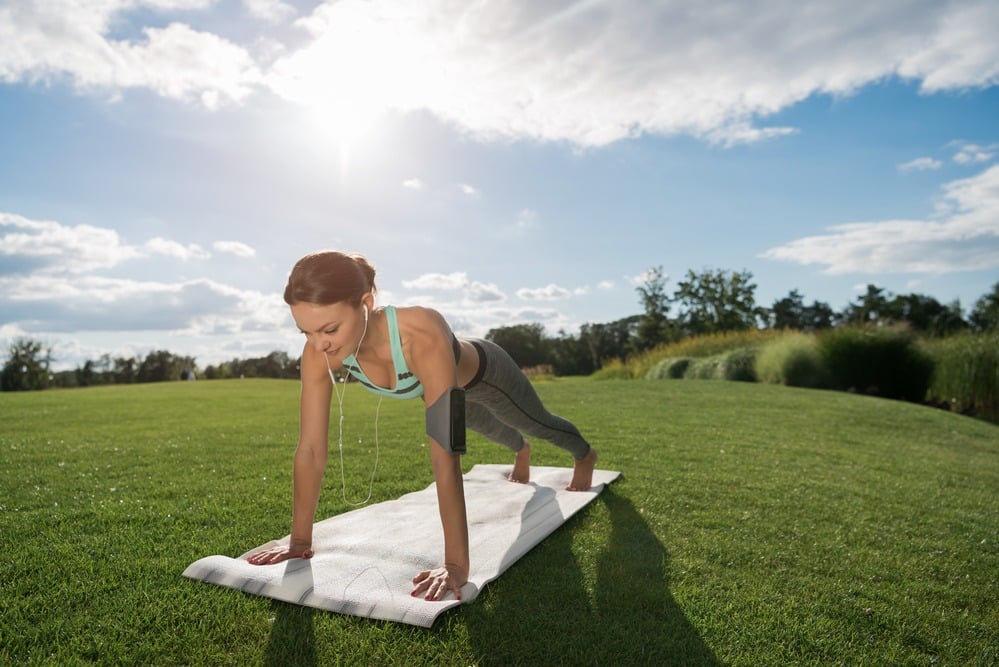Dealing with chronic scoliosis pain can be a constant struggle for those with mild to severe scoliosis. The stiffness and pain from posture issues caused by scoliosis can be a mild nuisance at best, and debilitating at its worst. Luckily, there are simple ways you can help alleviate and prevent scoliosis from crippling your daily routine through stretching regularly as well as at the onset of scoliosis pains.
Things to Keep in Mind
When stretching, your first instinct might be to try to correct the curvature of your spine by stretching and moving in the opposite direction of the curvature of your scoliosis. For example, if your scoliosis causes your spine to arch slightly to your left, you may try stretching your spine to the right to correct it. Surprisingly, this can have the opposite effect and make the pain worse. Stretching with your scoliosis can help alleviate tension in your muscles, increase blood flow, and help correct your posture as the stretched muscles retract to their normal position after the stretch, overcompensating and pulling your spine into a more normal alignment. This helps correct your posture imbalance, which is the root cause of the pain.
How to Stretch
When doing each stretch, it is important to do them properly in order to get the best results. When doing stretches, it is important to do the following: -Use slow and deliberate motions. Rushing through them not only eliminates any benefit you might hope to get out of them, but also increases your risk for strains and other injuries. -Stretch regularly. It doesn’t have to be a daily routine, but stretching at least a few times per week will help keep your body more limber and reduce the frequency of scoliosis pain flaring up. -Spend a decent amount of time holding each position. You want to hold your stretch for at least 30 seconds to allow your muscles to adapt to the tension and allow the recoiling of your muscle during the rest period to help relieve tension in not only the stretched muscle but the complimentary muscle. For example, the recoiling of your bicep after a good stretch will passively stretch your tricep to some degree, as the two work counter to each other (the tricep stretches as your bicep retracts).
Chest Stretches
Chest stretches can help not only counteract scoliosis that affects the upper back and shoulders but also help with overall upper body posture. To perform a chest stretch, start with your legs shoulder-width apart and hands out in front of you. Slowly pull your arms back in a rowing motion, squeezing your shoulder blades tight as your elbows pull back level with your shoulders. Hold for about 30 seconds, then extend your arms again to your starting position to reset.
Right Angle Wall Stretch
This stretch is great for your lower back. Start with your hands against the wall, and slowly walk back until your legs are under your hips and your body is at a right angle, bent at the hip. While pushing against the wall, slightly tuck your lower back to get a good stretch, and hold for as long as you’re comfortable. Once finished, walk forward sliding your hands back up the wall back to starting position.
Back Stretch
This is one of the simplest stretches you can do to help with your scoliosis, and you can do it just about anywhere. Start by extending your arms in front of your chest and lace your fingers. Rotating your palms outward, push your hands forward to get a good stretch in your back. You should feel it along with your shoulder blades and a little in the center of your upper spine. Hold for about 30 seconds, then rotate your hands back inward and pull your arms in to reset the position.
Hip Stretch
If your scoliosis pain triggers more in your hips, this stretch can help alleviate pain and compensate for the improper posture in your hips. Start by laying on your back with both legs extended. Pull one knee towards your chest, keeping your ankle taught and your foot pointed towards the ceiling. Pull until you feel a good stretch but not too much to where it becomes painful, hold for 30 seconds, and ease your leg back to starting position. Then repeat with the other leg.
What if Stretching Isn’t Enough?
If your condition is severe enough, stretching alone may help, but not be enough to fully alleviate your symptoms and pain. Stretching may also be difficult to perform on your own if your scoliosis is debilitating or prevents normal movement. In this case, you may want to consult a specialist to help stretch and massage your muscles, which can hopefully allow you to regain enough range of motion to begin stretching on your own. For information on treatment options and to set up a consultation, contact us and set up an appointment at 205-637-1363.







